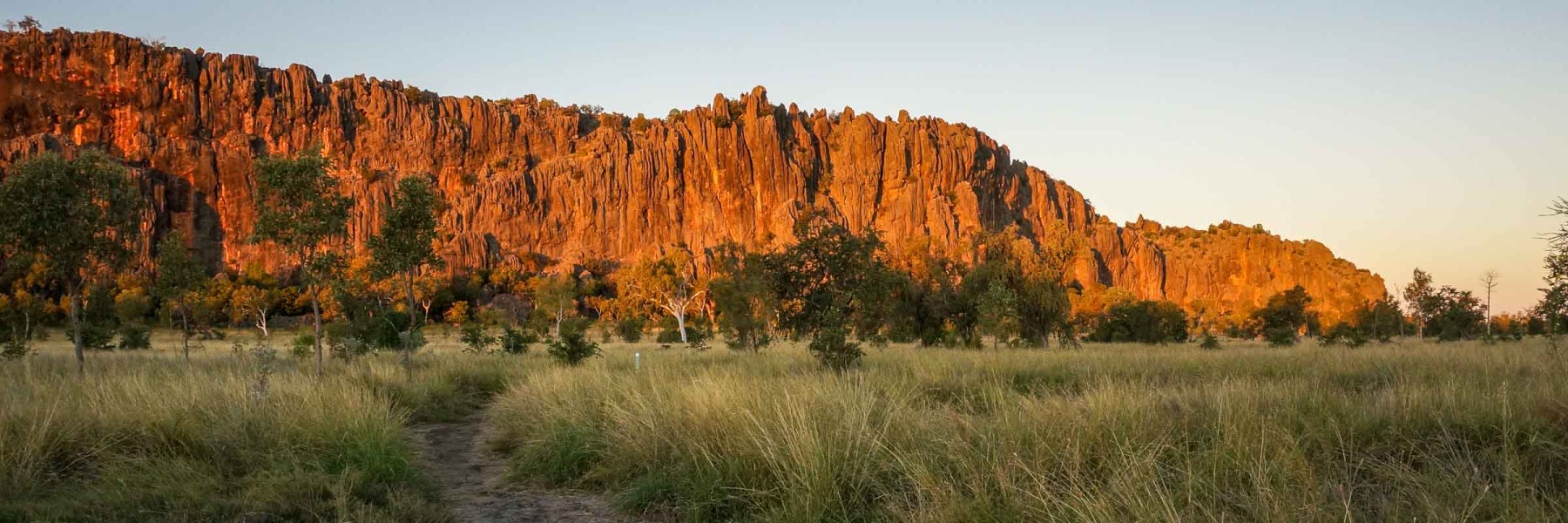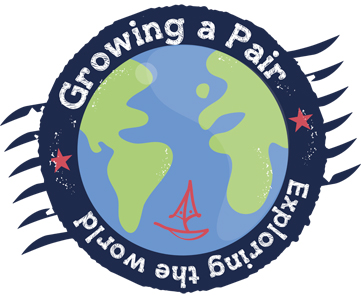
Windjana Gorge. Like the Great Barrier Reef, but different

Three hundred and eighty million years ago, in the Devonian period, Australia was busy building it’s first barrier reef. But this was over in the Northwest of the country, not on the east coast. At the time, the seabed was falling away and the sea was getting deeper, but at a rate that was gentle enough for the reef to keep growing higher so that it stayed close to the surface. After many many millions of years, this delicate race had produced a reef that was over 20 km deep in places and was home to an amazing array of prehistoric undersea critters.Fast forward to just twenty million years ago and massive geological changes have seen that Devonian reef lifted from the bottom of the Indian Ocean and transformed into the Napier Mountains, allowing a different set of geological activities to get underway. Wind and rain started to wash away the tops of the reef/mountains and the mighty Lennard River carved a path right through the middle of the range.
This brings us to the 5th July 2016 and the next major event in the life of the Devonian Reef – the growingapair team arrive for a nose around and to see what all the fuss is about.
The drive up to and in to the Napier Range is simply spectacular. In a land that can be best described as being mostly flat with the occasional wrinkle, the Napier Range can be seen from miles away and stands tall, dark and jagged against the endless blue horizon. Travelling west on the Gibb River Road, it looks like an impenetrable wall and could easily be the inspiration for a set from the Lord Of The Rings. But there’s a narrow cutting, which allows you to drive through, and then turn left to follow the reef down to the crossing of the Lennard River. There’s a tiny campsite, in the same style as Silent Grove, but dominated by the unbelievable backdrop of the Devonian Reef.
The views from the campsite are amazing, but walking into the gorge cut by the Lennard River is something else altogether. You enter through a narrow tunnel, cut into the rock by the river and stroll along a tree lined, sandy beach with cliffs soaring on both sides. This being the dry season, the mighty Lennard River was little more than a series of mostly stagnant pools, but this has the advantage that the resident population of 100 or so freshwater crocodiles are tightly squeezed together and super easy to spot. They’re not as huge or as deadly as their saltwater cousins but it’s still a massive buzz to see them basking in the sun, warming themselves up before they slide silently into the water in search of dinner.
As you get deeper in, the gorge opens up and you get a proper look at the mountains. It’s a bizarre thing as you’d expect that after twenty million years there’d be nothing recognisable left of the reef that formed the range. But it really does look like a massive, old, dead reef. There are great big coral bomies and huge lumps of bolder coral all the way up the 200 meter cliffs. It’s a proper jurassic coastline, and the combination of the cliffs, the crocks and the flocks of birds screeching at each other in the trees made it one of my favourite sites from the whole year of travelling. And I haven’t even started to try and describe the sunsets…
The campsite was crowded with plenty of toilet wildlife, but just as with Bell Gorge, there’s a bloody good reason for it. Both places are amazing and both places have made me think about the world and how it all got here. I so wish that we had more time here, it’s fantastic.
Love travelling. Love Australia. Love geology.







